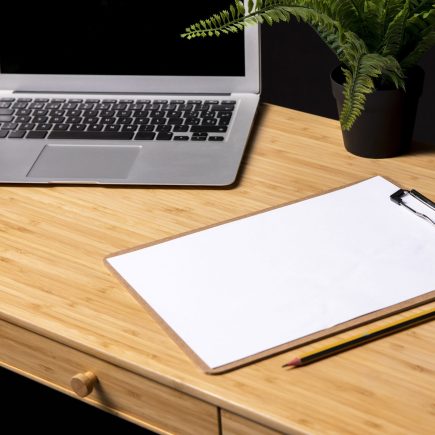Unlocking the Potential of Small Greenhouses
Gardening is a fulfilling and sustainable activity, but limited space can often be a barrier. Enter the small greenhouse – a powerful solution that allows you to grow a wide variety of plants year-round. Whether you’re looking to grow herbs, vegetables, fruits, or even flowers, a small greenhouse offers the perfect controlled environment, no matter the season or climate.
1. Best Plants for a Small Greenhouse
When deciding what to grow in your greenhouse, it’s essential to consider the plant’s size, light requirements, and the amount of space it will need. Fortunately, many plants thrive in compact spaces and offer maximum yield with minimal effort.
Herbs: Perfect for Limited Space
Herbs are ideal for small greenhouses as they are compact and grow well in controlled conditions. Plus, they can be used for culinary or medicinal purposes, adding both beauty and utility to your greenhouse.
- Basil: Perfect for the warm temperatures of a greenhouse, basil grows quickly and can be harvested continuously.
- Mint: Grows well in containers or hanging baskets, making it an excellent choice for small spaces.
- Thyme and Rosemary: Both are hardy, low-maintenance herbs that thrive with minimal care.

Leafy Greens: Fast Growing and Nutrient-Rich
Leafy greens are perfect for small greenhouses because they grow quickly and require little space. You can harvest them continuously, ensuring a fresh supply of greens year-round.
- Lettuce: Grows well in a greenhouse, providing a steady supply of fresh leaves for salads.
- Spinach: Thrives in cooler greenhouse temperatures, making it perfect for early spring and fall gardening.
- Kale: A nutritious and hardy green that can be grown throughout the year.
Compact Vegetables: High Yield in Small Spaces
Small vegetable varieties are ideal for greenhouse gardening. These plants maximize yield without taking up too much room.
- Tomatoes: Opt for compact or dwarf varieties like “Tiny Tim” tomatoes that are perfect for small spaces.
- Peppers: Both sweet and hot peppers grow well in small greenhouses, especially when grown in pots or raised beds.
- Carrots: Choose short varieties for easy harvesting in confined spaces.
2. Space Optimization
Small greenhouses often present a challenge when it comes to space. However, with some creative planning and organization, you can grow a variety of plants without feeling cramped. Below are some methods to maximize your space:
Vertical Gardening: Grow Up, Not Out
Vertical gardening is one of the best ways to utilize your greenhouse’s height and increase plant capacity.
- Trellises: Use trellises for climbing plants like cucumbers, beans, and tomatoes. This saves horizontal space while promoting healthy growth.
- Hanging Baskets: Hanging baskets are perfect for growing herbs like basil, parsley, and thyme, and they add a decorative touch.
Tiered Shelving and Raised Beds: Add Layers to Your Space

Elevating your plants by using shelves or raised beds allows you to grow more without overcrowding.
- 3-Tier Shelving: Products like the Outsunny 3-Tier Mini Greenhouse offer multiple layers for organizing plants, giving you more space for smaller pots and seedlings.
- Raised Beds: Consider adding raised garden beds to grow plants like lettuce, spinach, or herbs, which thrive when their roots are elevated.
Maximizing Horizontal Space: Use the Floor Wisely
Even the floor space in your greenhouse can be used efficiently to grow plants or store gardening tools.
- Under-Shelf Planting: Use the shaded areas beneath shelves for growing leafy greens or herbs that require less light.
3. Growing Seasons

A greenhouse gives you the ability to extend the growing season beyond traditional outdoor gardening limitations. Here’s how you can grow fresh produce year-round:
Spring: Start Your Seeds Early
Spring is the perfect time to start seedlings in your greenhouse. This gives your plants a head start before being transplanted outdoors.
- Cool-Weather Crops: Start growing early crops like lettuce, spinach, and kale that thrive in the cooler temperatures of spring.
Summer: Thrive in the Heat
Your greenhouse is the perfect space for heat-loving plants during the warmer months.
- Tomatoes and Peppers: These crops thrive in the warmth of a greenhouse and can be harvested earlier than outdoor plants.
Autumn and Winter: Grow Cold-Tolerant Crops
A greenhouse provides protection from the cold, allowing you to grow hardy crops throughout the winter.
- Cold-Tolerant Vegetables: Radishes, kale, and cabbage are perfect for winter harvests, even in colder climates like Canada.
4. What Not to Grow in a Small Greenhouse
While small greenhouses are highly versatile, some plants are not suitable due to their space requirements or growth habits. Here are some plants you should avoid:
Space-Hogging Plants: Avoid Large Crops
Melons, squash, and sunflowers take up too much room in a small greenhouse.
- Melons and Squash: These plants need a lot of space to spread out and can quickly overwhelm a small greenhouse.
Companion Planting: Watch for Incompatible Plants
Certain plants should not be grown together due to shared pests or diseases. For example, tomatoes and corn should not be planted near each other in a greenhouse.
- Avoid Planting: Avoid planting corn, tomatoes, and peppers in close proximity.
FAQs
How do I make the most of my tiny greenhouse space?
Think vertically! Use trellises, hanging baskets, and tiered shelving to turn your greenhouse into a vertical jungle. Bonus: You can even plant under shelves for more plant power!
How do I make the most of limited space in my small greenhouse?
Utilize vertical gardening by adding trellises, hanging baskets, and tiered shelving. This maximizes plant capacity without overcrowding. Use the floor area efficiently for smaller pots and under-shelf planting to optimize space.
How do I avoid plant diseases in my small greenhouse?
Regularly inspect plants for pests or disease signs and remove any affected leaves. Clean tools, pots, and surfaces to reduce contamination. Maintain proper airflow and humidity levels to discourage mold and mildew growth.






















